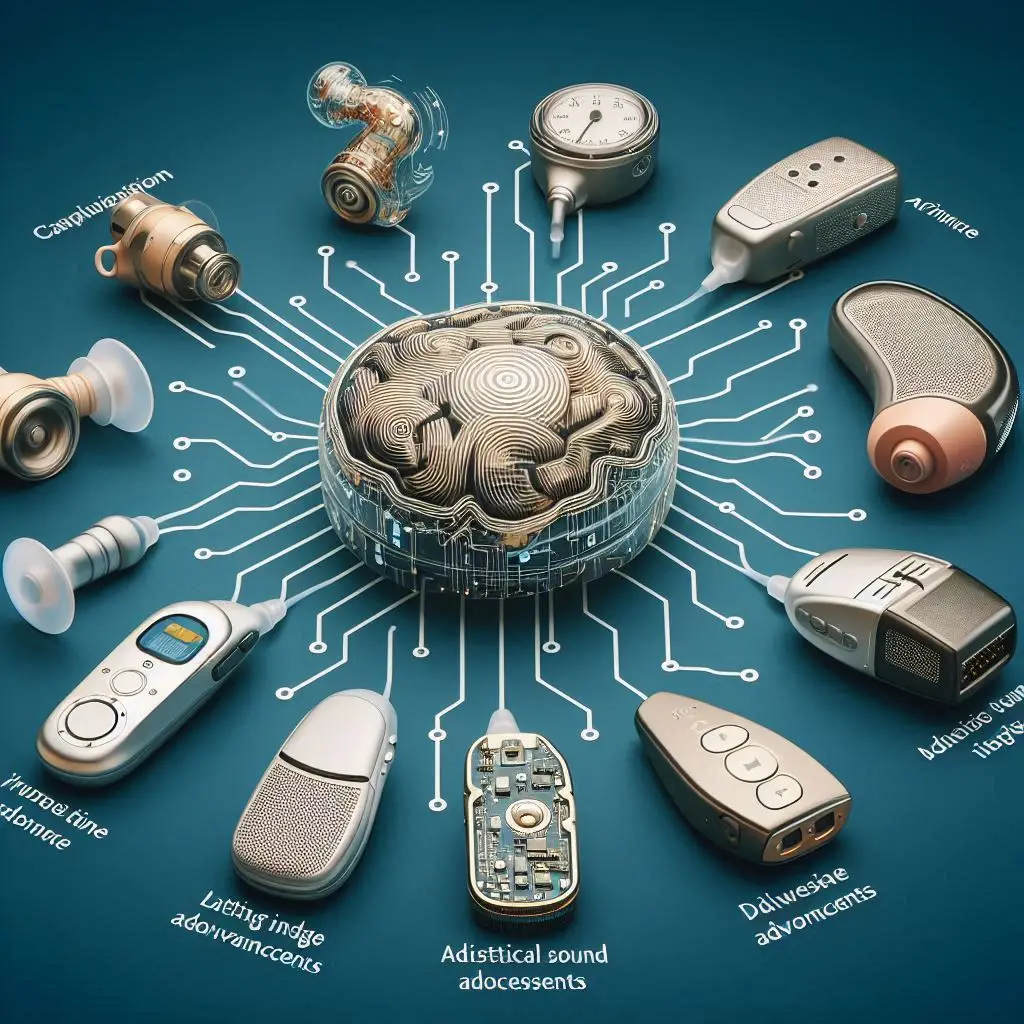
Hearing Aid Technology: Latest, Cutting-Edge, and Newest Advancements
Introduction
This article, Hearing Aid Technology: Latest, Cutting-Edge, and Newest Advancements, delves into the evolution of hearing aids, from basic amplification devices to sophisticated systems featuring artificial intelligence (AI), wireless connectivity, and adaptive sound processing.
Hearing aid technology has transformed significantly, bridging the gap between hearing impairment and clear, accessible sound. Today’s hearing aids offer more than just sound enhancement; they adapt to different environments, connect to various devices, and improve the quality of life for users of all ages. Here, we explore the components of hearing aid technology, the latest innovations, cutting-edge developments, and the newest devices on the market, each with unique features to meet users' needs.
Hearing Aid Technology
Hearing aid technology has seen vast improvements since its inception. Hearing aids are devices that amplify sounds to assist individuals with hearing loss. Modern hearing aid technology integrates several components, such as microphones, amplifiers, and receivers, into a small, discreet device. Early models focused primarily on volume amplification, often producing unclear or distorted sound. Over time, innovations introduced clearer, more natural sound and customization options, enabling wearers to adjust their devices according to their specific hearing requirements.
The development of digital hearing aids marked a breakthrough, allowing sound to be processed through digital chips. These digital devices became capable of amplifying specific frequencies, filtering background noise, and enhancing speech clarity. Advances in materials, batteries, and design have also contributed to hearing aid comfort, making devices lighter, more durable, and longer-lasting. Today's hearing aids now include features like telecoils, noise reduction, and frequency response, making them customizable for different hearing environments.
Latest Hearing Aid Technology
The latest hearing aid technology brings modern solutions to address the challenges of hearing loss with user-friendly enhancements. Latest hearing aid technology includes AI-based features that can automatically adjust to the user’s sound environment. These advanced systems use machine learning to understand and react to changes in surroundings, ensuring that the wearer experiences optimal sound quality regardless of location. Bluetooth connectivity has also become a popular feature, allowing users to stream audio from their phones, TVs, and other devices directly to their hearing aids. This seamless integration brings flexibility, especially for users who rely on multiple digital devices daily.
Additionally, feedback management systems have been improved to minimize annoying feedback loops that were common in older devices. Feedback reduction systems use sophisticated algorithms to detect and cancel feedback, which provides a smoother and more comfortable listening experience. Some models even offer custom programs that allow users to personalize their hearing aids for different scenarios, such as crowded areas or quiet rooms, with the help of connected smartphone applications.
Cutting-Edge Hearing Aid Technology
Cutting-edge hearing aid technology is at the forefront of innovation, incorporating state-of-the-art features for improved sound quality and user experience. Cutting-edge hearing aid technology includes features like real-time language translation, which can benefit users who frequently interact in multilingual environments. These translation systems allow users to hear translations of different languages in real-time, breaking down communication barriers and enhancing accessibility.
Rechargeable batteries are another breakthrough, eliminating the need for constant battery replacements. These batteries typically last all day and can be recharged overnight, providing convenience and sustainability. Smart sensors have also been introduced in hearing aids to detect various sound environments, automatically adjusting the sound settings to provide the most suitable amplification and clarity. Many cutting-edge devices can also monitor health metrics like steps and heart rate, helping users manage overall wellness.
Newest Hearing Aid Technology
Newest hearing aid technology reflects the latest releases and models, pushing the boundaries of what hearing aids can achieve. Newest hearing aid technology features include deep neural networks (DNNs) that mimic human auditory processing, giving users a more natural listening experience. These DNNs are trained on thousands of sounds, enabling hearing aids to distinguish between background noise and relevant speech. This technology significantly improves sound clarity in noisy environments, such as restaurants or social gatherings.
Adaptive sound processing is another significant advancement in the newest hearing aids. This feature allows the device to adapt to sound environments automatically, ensuring that users hear the most important sounds at any given time. Remote adjustments are also becoming more common; users can adjust their hearing aid settings remotely through mobile applications without needing an audiologist appointment. This is especially beneficial for users with limited mobility or those living in remote areas.
Conclusion
In summary, hearing aid technology has advanced from basic devices into highly adaptable, intelligent systems that transform users' daily lives. Today’s hearing aids offer cutting-edge technology, including AI-powered adjustments, Bluetooth compatibility, and custom programs that elevate the listening experience. The newest developments, such as DNNs and remote adjustment capabilities, bring unparalleled convenience and clarity, making hearing aids more accessible and personalized than ever before. With each innovation, hearing aids continue to redefine accessibility, comfort, and quality of life for millions worldwide.

